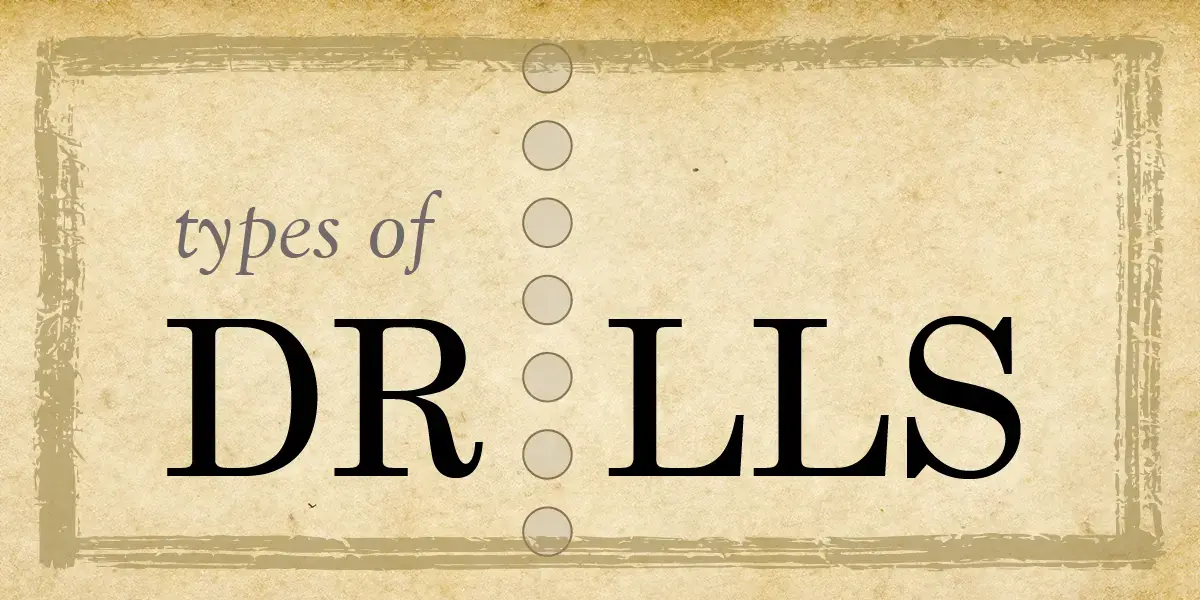The ancient Egyptians drilled deep holes into limestone and granite, leaving Egyptologists to puzzle over how they did it.
Today, drilling is more common and less mysterious. Every DIYer has a drill — or several — in the garage and a complement of specialized drill bits to match.
The drill, which has been around for thousands of years, will likely remain a featured tool in construction and home repair well into the future.
A Brief History of the Drill
- Ancient Egyptian craftsmen used bow drills to bore into stone and other materials as early as 3000 BC.
- The Romans introduced the iron auger, making woodwork more efficient.
- During the Middle Ages, blacksmiths manufactured hand-crank drills for woodworking and metalworking.
- The first handheld electric drill was patented in 1895 by Wilhelm Fein in Germany, revolutionizing tool design.
- Modern cordless drills emerged in 1961, invented by Black & Decker, integrating rechargeable battery technology.
- Innovations in the 21st century have led to multi-function drills with advanced features like torque adjustment and ergonomic designs.
Types of Drills & Their Uses
Power Drills
1. Corded Drills
Corded drills must be plugged in to operate. They deliver consistent, high-powered performance for heavy-duty tasks like boring large holes into wood or metal.
- Best For: Long work sessions or stationary jobs where portability isn’t a concern, such as building furniture or cabinetry.
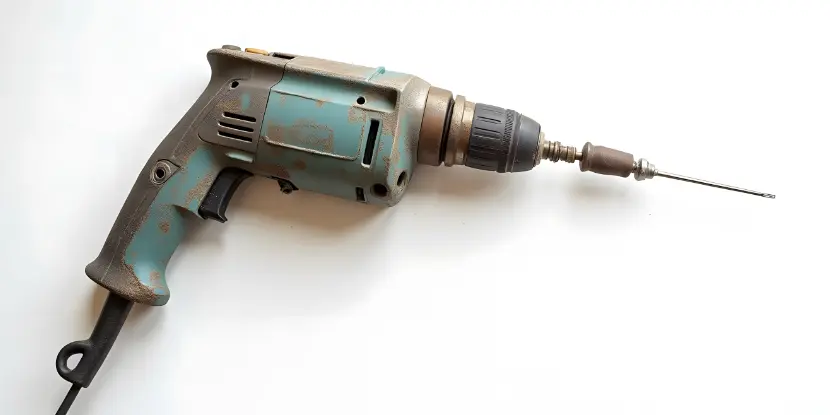
Corded drills deliver consistent, high-powered performance.
2. Cordless Drills
Cordless drills run on rechargeable batteries and offer freedom of movement. Modern cordless drills use lithium-ion batteries, which provide long-lasting power and faster recharge times.
- Best For: General projects like hanging picture frames, assembling furniture, or placing fixtures.
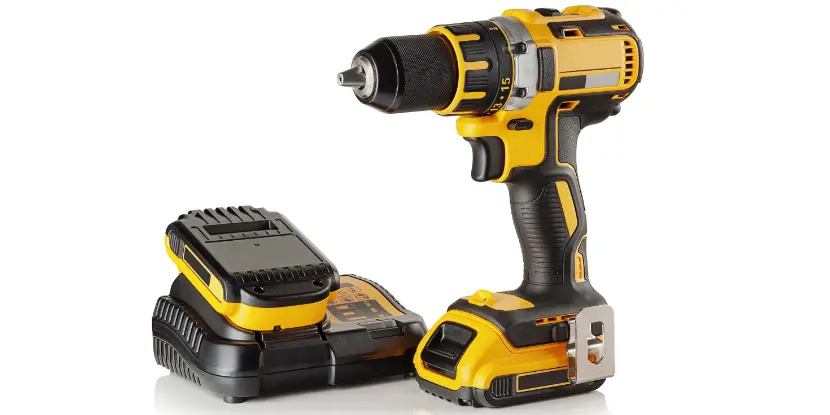
Cordless drills run on rechargeable batteries and offer freedom of movement.
3. Hammer Drills
Hammer drills combine rotational drilling with a hammering motion to chisel through tough materials like concrete or brick. These drills are essential for masonry work.
- Best For: Drilling into brick walls to install shelves or anchors or creating holes for plumbing or electrical wiring.
4. Impact Drivers
Impact drivers are designed to drive long screws or fasteners into hard surfaces. They deliver higher torque than standard drills.
- Best For: Professionals working with dense materials like hardwood or construction-grade screws.
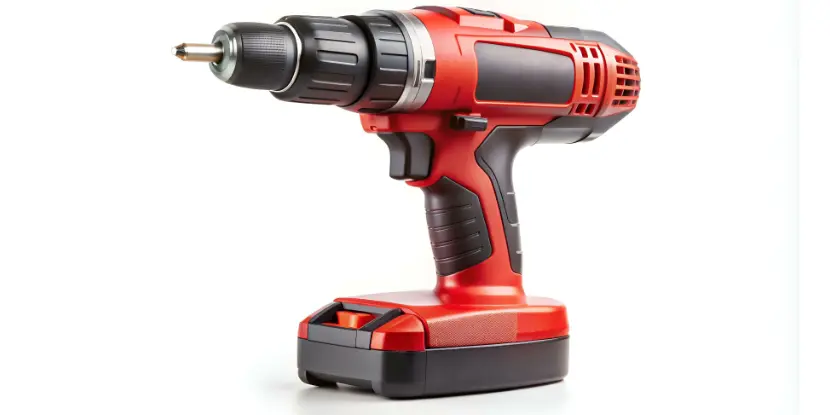
Impact drivers are designed to drive long screws or fasteners into hard surfaces.
5. Rotary Drills
Rotary drills can hammer as they rotate and feature a specialized chuck design that accommodates various attachments, including sanding discs, grinding wheels, wire brushes, hole saws, and more.
- Best For: Versatile tasks like sanding, polishing, grinding, or buffing. Some models can also drill through concrete and other tough materials.
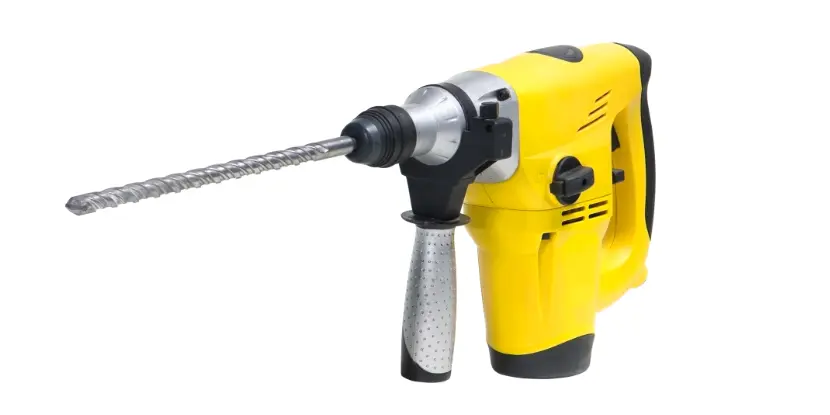
Rotary drills can hammer as they rotate and feature a specialized chuck design that accommodates various attachments.
6. Combi Drills (or Combination Drills)
Combi drills combine the functionality of a drill driver and hammer drill in one compact device. Most come with multiple modes for different tasks.
- Best For: Anyone looking for one tool to complete various tasks, from hanging curtains to general renovations.
7. Right-Angle Drills
The head of a right-angle drill is designed at a 90-degree angle, making it easy to drill in tight or awkward spaces, like corners or between studs.
- Best For: Electricians or contractors running cords or drilling in tight spots.
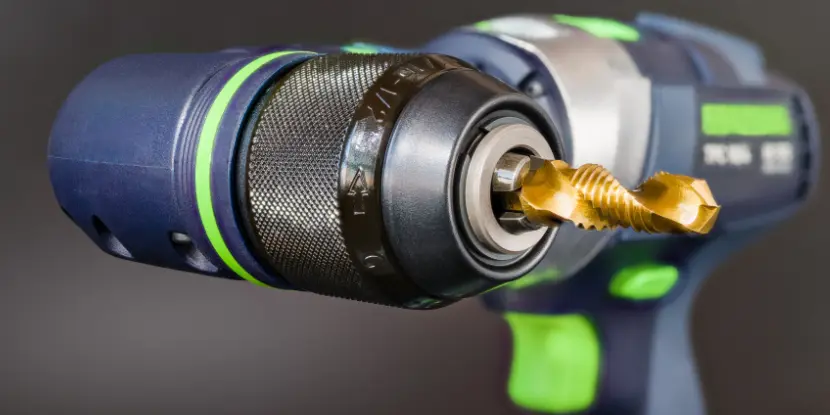
The head of a right-angle drill is designed at a 90-degree angle, making it easy to drill in tight or awkward spaces.
Hand Drills
Hand drills remain useful today for fine woodworking, jewelry making, and other delicate crafts. They also provide backup in case of a power outage or malfunction.
1. Brace Hand Drill
Brace hand drills have a U-shaped handle that you crank with one hand while pressing down on the back of the drill with your other hand to create rotation.
- Best For: Woodworking projects where precision is key because it allows for slow, controlled drilling.
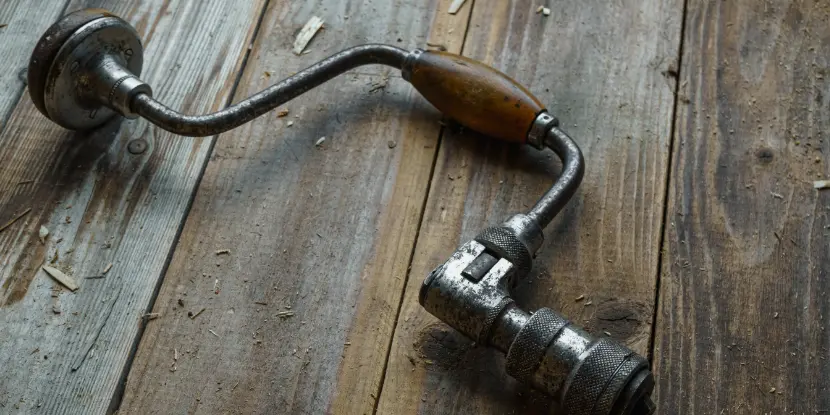
Brace hand drills are best for woodworking projects where precision is key.
2. Geared Hand Drill
Geared hand drills use a geared mechanism to create more torque with less effort. The drill remains stationary as you turn the handle, making it easier to drill large holes in wood or metal.
- Best For: General woodworking projects and manual drilling in harder materials.
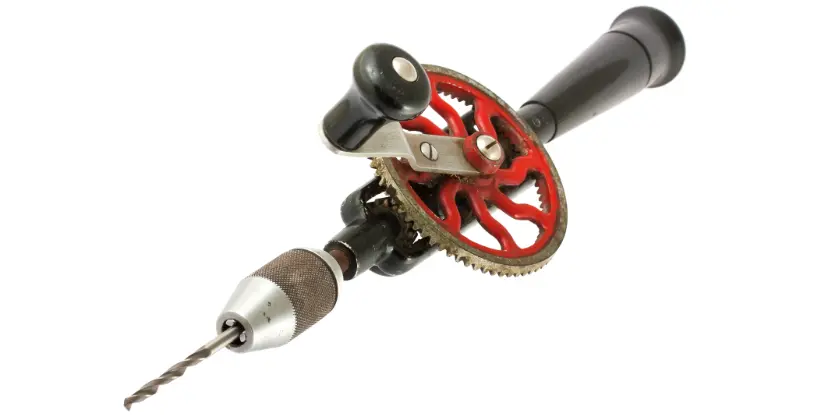
Geared hand drills use a geared mechanism to create more torque with less effort.
3. Pin Hand Drill
Pin hand drills have a pin-like shaft that turns as you push down on the handle. They’re ideal for small, precise holes in wood or metal.
- Best For: Jewelry making, model building, and other delicate projects.
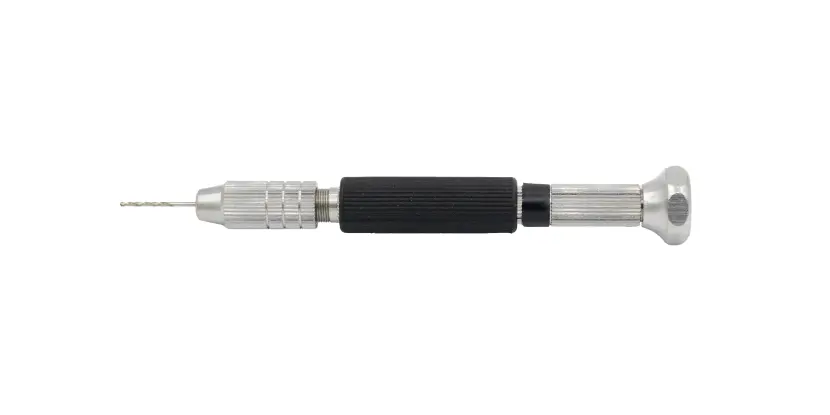
Pin hand drills have a pin-like shaft that turns as you push down on the handle
Professional-Grade Drills
1. Rotary Hammers
These next-level hammer drills are built for robust drilling and chiseling tasks on construction-grade materials. They can create large holes or break concrete.
- Best For: Professional contractors working on extensive masonry projects.
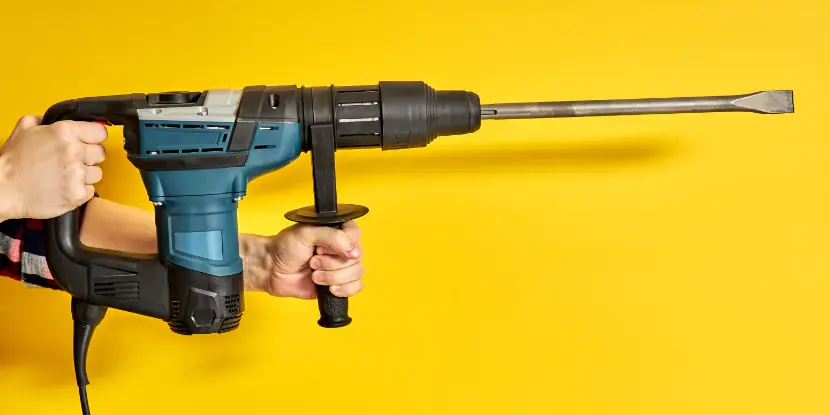
Professional rotary hammer drills are built for robust drilling and chiseling tasks on construction-grade materials
2. Magnetic Drills
Magnetic drills use a powerful magnet and are designed for heavy-duty drilling into metals.
- Best For: Industrial applications like creating holes in steel beams or pipes.
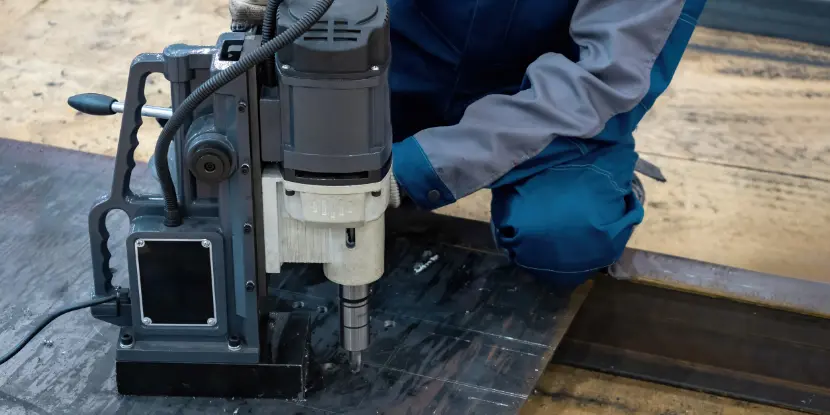
Magnetic drills use a powerful magnet and are designed for heavy-duty drilling into metals.
3. Drill Presses
These stationary drills are mounted on a stand or table and offer a level of precision and control that handheld drills can’t match.
- Best For: Woodworkers and metalworkers requiring high precision for repetitive drilling.
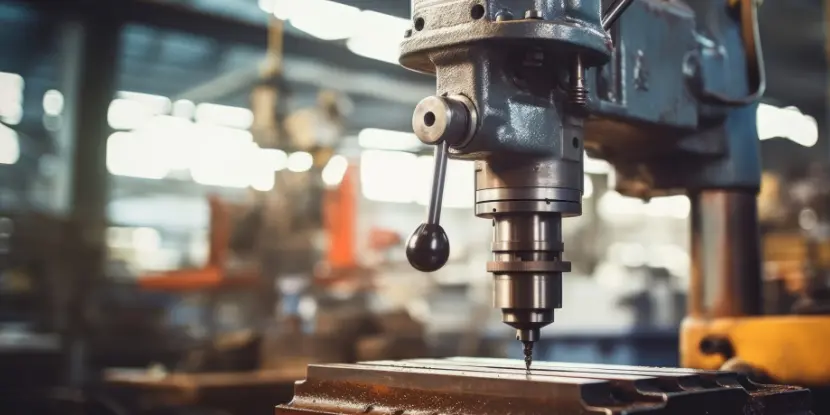
Drill presses are mounted on a stand and offer a level of precision and control that handheld drills can’t match.
Choosing the Right Drill for Your Project
Consider the following factors when selecting a drill for your project:
- Power: Choose a drill with enough power to complete your task efficiently. For professional-grade or heavy-duty work, opt for corded or percussion drills. For general DIY projects, a cordless or impact driver will suffice.
- Speed: Variable speed controls allow you to adjust the drill’s rotation and are essential when working with different materials. Slower speeds are useful for delicate tasks like sanding or polishing, while higher speeds are necessary for drilling through harder materials.
- Ergonomics: Consider the drill’s size, weight, and grip to ensure it’s comfortable for extended periods without causing strain or fatigue.
- Attachments: Some drills come with various attachments for multiple tasks.
- Battery Life/Power Source: If opting for a cordless drill, consider the battery life and type of battery used. Lithium-ion batteries are preferred for their long-lasting power and fast recharge times.
Accessories & Bits
Invest in quality bits and accessories to get the most out of your drills. The essentials include:
- Drill bits for masonry, metal, wood, etc.
- Screwdriver bits for driving screws or fasteners.
- Spade bits for creating larger holes in wood.
- Hole saws to cut large holes in wood or other materials.
- Countersink bits to create clean, flush holes for screw heads.
- Wire brushes for removing rust or paint from metal surfaces.
Tips for Using Drills Safely & Efficiently
- Wear safety goggles during use.
- Use the correct drill bit for the material you’re working on.
- Start with a low speed and gradually increase it for better control.
- Keep your drill bits sharp. Dull bits can overheat and damage the material and drill.
FAQs: Types of Drills
Q: What’s the difference between a drill and an impact driver?
A drill is for creating holes, while an impact driver is designed to drive screws with higher torque.
Q: Can I use a hammer drill for regular tasks?
Yes, but it’s not ideal for everyday usage as the hammering function could damage lighter materials.
Q: What’s the ideal drill for beginners?
A cordless drill is versatile, lightweight, and easy to use, making it perfect for beginners.
Q: How do I maintain my power drill?
Clean it regularly, store it in a dry place, and replace or sharpen bits as needed. Oil moving parts occasionally if recommended by the manufacturer.
Q: What drill do I need for metalwork?
A rotary drill or magnetic drill paired with metal-specific drill bits is ideal.
Q: Can I use a regular drill for concrete?
You can, but a hammer drill will deliver much better results.
Q: Are drill bits universal?
Most bits are compatible with standard chuck sizes (like 3/8″ or 1/2″), but always check compatibility before purchasing.
Q: What’s the purpose of variable speed controls on a drill?
Variable speed controls let you adjust the drill’s rotation speed, enabling better precision and versatility when working with different materials. Lower speeds are ideal for drilling through delicate materials or starting a hole, while higher speeds are better for harder materials like metal or concrete.
Q: How do I know when to replace a drill bit?
You should replace a drill bit when it becomes dull or damaged. Signs include slower performance, uneven holes, and visible wear, such as chipped or flat edges.

